precision agriculture
description: the use of technology for optimizing field-level management in farming practices
34 results
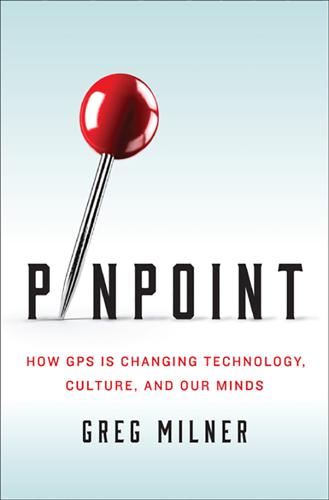
Pinpoint: How GPS Is Changing Our World
by
Greg Milner
Published 4 May 2016
The study analyzed U.S. crop production from 2007 to 2010 and estimated that GPS reduced input costs by $9.8 billion and accounted for $10.1 billion in output. 104 “there is a long way to go”: “Precision Agriculture: An Opportunity for EU Farmers,” European Parliament, Directorate-General For Internal Policies, Policy Department B, Structural And Cohesion Policies, Agriculture and Rural Development, 2014, 35–6. 104 By 2020: “Precision Farming Market by Technology (GPS/GNSS, GIS, Remote Sensing & VRT), Components (Automation & Control, Sensors, FMS), Application (Yield Monitoring, VRA, Mapping, Soil Monitoring & Scouting) and Geography—Global Forecasts to 2020,” MarketsandMarkets, 2014. 104 nearly 50 percent of the world’s tractors: European Global Navigation Satellite Systems Agency, “GNSS Market Report.” 104 The fastest-growing market: European Global Navigation Satellite Systems Agency, “GNSS Market Report.” 105 Evidence suggests: Caspar Van Vark, “From Agribusiness to Subsistence: High-Tech Tools Now Available to All,” Guardian, June 4, 2014. 105 In Uttar Pradesh: Ibid.
…
Seaworth Farms has been in the family since Troy’s grandfather purchased the 2,000 acres in 1945, using most of it to grow beets, which are still the farm’s main crop, along with corn, hay, and beans. In the mid-1990s, when Troy was studying agronomy at Kansas State University, he learned about the burgeoning field of precision agriculture. Practitioners of precision agriculture squeeze every last bit of efficiency out of the process, maximizing yield while minimizing cost—in money and time—and the use of resources such as water, fertilizer, and pesticides. Troy became a convert, and convinced his dad that investing in precision agriculture would quickly pay for itself. Troy wanted to convert most of the farm to a farming practice called strip till. The process of harvesting a field leaves behind leaves and other organic residue, which a farmer would traditionally remove in preparation for the next planting.
…
Just 22 percent of farms in the U.K. are using navigation satellites to increase accuracy, though that figure is slowly increasing. A survey of precision agriculture practices across the continent commissioned by the European Parliament noted a widespread skepticism of these methods among farmers in England, concluding that “there is a long way to go before the majority is convinced.” By 2020, the precision agriculture market (including tools that do not use GPS) will be worth $4.5 billion, and nearly 50 percent of the world’s tractors will use GPS. The fastest-growing market for GPS-based precision agriculture is Asia and the Pacific, where the adoption rate has been almost viral, from nearly nobody in 2006 to 17 percent of the world’s installed GPS precision agriculture systems in 2015, and growing at nearly twice the global rate.

The New Harvest: Agricultural Innovation in Africa
by
Calestous Juma
Published 27 May 2017
It improves crop productivity by allowing farmers to plan exactly when to till, plant, weed, and apply fertilizer, based on changing conditions, without relying on labor or other resources. It can help in more appropriate applications (e.g., split application) of organic and nonorganic fertilizer, resulting in healthier soils. It is also a key component of precision agriculture such as direct seeding, which helps to limit tillage and carbon dioxide emissions. Finally, countries such as Uganda, Tanzania, and Zambia are realizing the benefits of technical education and are encouraging greater enrollment in standard and nonstandard programs. As more technical support becomes available in rural areas, tractors and other equipment become easier to maintain, and new entrepreneurial activities unfold.
…
UAVs, on the other hand, can provide high-quality data at an affordable price compared to aerial imagery or very high-resolution satellite data, and they can provide the real-time and frequent data collection that is essential to crop monitoring. One important use of this data is for land monitoring, which includes land management practices that can help reduce degradation and soil erosion. Second, it can be used to enhance precision agriculture, which can help farmers vary the rate of input use in order to reduce costs and improve efficiency. Third, one of the most important applications is using decision support systems for agro-technology transfer to produce yield maps, which are created by integrating data from 54 THE NEW HARVEST UAVs as well as on-the-ground data and can be made available to all farmers through smartphone applications.
…
Existing educational opportunities do not tap into this mindset, nor does the educational system in Africa specifically address the challenges faced by the sector. Sub-Saharan Africa still ranks the lowest in the world in terms of yield-enhancing practices and techniques, even compared to other developing regions. These practices include mechanization, use of agro-chemicals, improved seed, precision farming techniques, and increased use of irrigation.43 Mechanization is very low, with approximately 13 tractors per 100 square kilometers of arable land, versus 200 tractors per 100 square kilometers globally.44 Similarly, there are only two tractors per 1,000 farmers in sub-Saharan Africa versus 883 per 1,000 in the United Kingdom.45,46 As mentioned above, only 4% of sub-Saharan Africa’s cropland is irrigated, compared with the world average of 18.4%, and the use of chemical inputs is minimal, at nine kilograms per hectare compared with the world average of 100 kilograms per hectare.

The Industries of the Future
by
Alec Ross
Published 2 Feb 2016
Despite their dominant position, they eventually lost their market share on the hardware side to upstarts like Apple and Dell and on the software side to companies like Microsoft that had the benefit of being born specifically for the personal computer market. Monsanto, DuPont, and John Deere will have to continue to acquire the most promising start-ups, the precision-agriculture natives, if they are going to stay ahead in what will be a fast-changing field. I also think that small farmers are likely to derive as much benefit from precision agriculture as larger farmers with thousands of acres. Precision agriculture is not based on huge enterprise software systems that take up half the barn. That expensive software is in the cloud and accessible on cheap devices like smartphones and the tablets I saw in the tractor’s “cockpit.”
…
When precision agriculture mainstreams, it could play the role of these national networks of agronomists. The best hope for India is that precision agriculture provides a leapfrog opportunity, helping its subsistence-level farmers achieve a level of performance that is impossible for them today. It represents the best hope for feeding the hundreds of millions of people in India who don’t have enough to eat today. Precision agriculture will take farming from being an industrial age industry to a digital age industry. Precision agriculture also offers the promise of a major reduction in pollution. My adopted home state of Maryland provides an excellent example. I live on the Chesapeake Bay, home to beautiful waterways and delicious blue crabs.
…
As the population continues to grow rapidly, the task of producing enough rice, wheat, and other staples grows more difficult. Precision agriculture will not end hunger in India or turn its subsistence-level farmers into serious agribusinesses, but in an environment of scarcity, it can take those scarce resources, be they seed, fertilizer, or water, and get the most out of them. India does not have a national network of agronomists to provide expertise and resources to its country’s farmers as China, the Americas, and Europe do. The budgetary resources in India are spread too thin. When precision agriculture mainstreams, it could play the role of these national networks of agronomists.

Investing to Save the Planet: How Your Money Can Make a Difference
by
Alice Ross
Published 19 Nov 2020
David Perry, head of agricultural microbes start-up Indigo, told the Financial Times in 2018 that while Amazon had disrupted retail, Tesla had disrupted transport and Netflix had disrupted media, agriculture was ‘the last of the large industries to really adopt new technologies and business models’. Enter precision agriculture, or precision farming methods. These use technology including drones, satellites, robots and mass-scale data collection to help farmers make sure that each plant gets the right amount of water and fertiliser, increasing productivity and reducing the environmental impacts of farming. One example is Farmobile, a data technology company that helps farmers to improve efficiency and profitability.
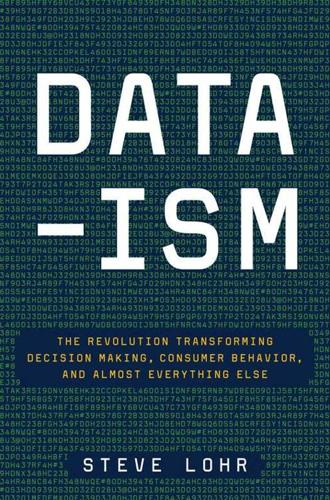
Data-Ism: The Revolution Transforming Decision Making, Consumer Behavior, and Almost Everything Else
by
Steve Lohr
Published 10 Mar 2015
The Central Valley research, a side-by-side comparison of two methods of crop management, is the equivalent of an Internet A/B test of an ad or online offering, except done on a patch of the earth rather than on a Web site. The precision agriculture pilot was a joint effort of two companies, IBM and E. & J. Gallo Winery. And it was in good part a collaboration between two men: Hendrik Hamann, a German physicist and researcher at IBM, and Dokoozlian, a native Californian who grew up on a small family vineyard and is Gallo’s chief plant scientist. Dokoozlian sees precision agriculture as the latest step in a decades-long march, transforming a craft ruled by tradition and established practice into a science relying on objective measurement.
…
P., 5–6 Snyder, Steven, 165–67, 170 social networks, research using human behavior and, 86–94 retail use, 153–62 spread of information and, 73–74 Twitter posts and, 197–202 see also privacy concerns Social Security numbers, data used to predict person’s, 187–88 software, origin of term, 96 Solow, Robert, 72 Speakeasy programming language, 160 Spee (Harvard club), 28–30 Spohrer, Jim, 25 Stanford University, 211–12 Starbucks, 157 Stockholm, rush-hour pricing in, 47 storytelling, computer algorithms and, 120–21, 149, 165–66, 205, 214 structural racism, in big data racial profiling, 194–95 Structure of Scientific Revolutions, The (Kuhn), 175 Sweeney, Latanya, 193–95 System S, at IBM, 40 Tarbell, Ida, 208 Taylor, Frederick Winslow, 207–8 Tecco, Halle, 16, 25, 28, 168–69 Tetlock, Philip, 67–68 thermostats, learning by, 143–45, 147–53 Thinking, Fast and Slow (Kahneman), 66–67 toggling, 84 Truth in Lending Act (1968), 185 T-shaped people, 25 Tukey, John, 96–97 Turing, Alan, 178–79 Tversky, Amos, 66 Twitter, 85 posts studied for personal information, 197–202 “Two Cultures, The” (Snow), 5–6 “universal machine” (Turing’s theoretical computer), 179 universities, data science and, 15–16, 97–98, 211–12 Unlocking the Value of Personal Data: From Collection to Usage (World Economic Forum), 203 “Unreasonable Effectiveness of Data, The” (Norvig), 116 use-only restrictions, on data, 203 Uttamchandani, Menka, 77–78, 80, 212 VALS (Values, Attitudes, and Lifestyles), 155 Van Alstyne, Marshall, 74 Vance, Ashlee, 85 Vargas, Veronica, 159–60 Varma, Anil, 136–37 Veritas, 91 vineyards, data used for precision agriculture in, 123–33, 212 Vivero, David, 29 Vladeck, David, 203, 204 von Neumann, John, 54 Von Neumann architecture, 54 Walker, Donald, 2, 63, 212 Walmart, 104, 154 Watson, Thomas Jr., 49 Watson technology, of IBM, 45, 66–67, 120, 205 as cloud service, 9, 54 Jeopardy and, 7, 40, 111, 114 medical diagnoses and, 69–70, 109 Watts, Duncan J., 86 weather analysis, with big data, 129–32 Weitzner, Daniel, 184 “Why ask Why?” (Gelman and Imbens), 115–16 winemaking, precision agriculture and, 123–33, 212 Wing, Michael, 49–50 workforce rebalancing, at IBM, 57 World Economic Forum, 203 Yarkoni, Tal, 199 Yoshimi, Bill, 198 ZestFinance, data correlation and, 104–7 Zeyliger, Philip, 100–101 Zhou, Michelle, 197–202 Zuckerberg, Mark, 28, 86, 89 ABOUT THE AUTHOR Photo by Fred Conrad STEVE LOHR reports on technology, business, and economics for the New York Times.
…
The vines stand in neat rows that extend to the horizon, each in its assigned place, patiently waiting. The crisp fall air smells of dry, fallen leaves and rich alluvial soil. “This is autumn in the vineyard,” says Nick Dokoozlian. “Yes, it’s a beautiful thing.” This vineyard in the north of the Central Valley, outside the town of Lodi, is also the site of an encouraging experiment in precision agriculture, which is essentially big-data farming. Using data from on-the-ground sensors and satellite imaging, a research team was able to tailor the ideal water and fertilizer amounts to be drip-fed to vines almost on a vine-by-vine basis. In the 2013 growing season, two sections of the vineyard, side by side, served as an agricultural petri dish.
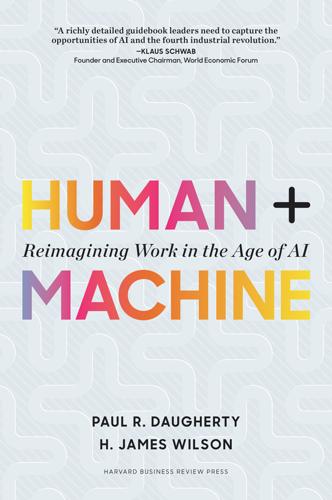
Human + Machine: Reimagining Work in the Age of AI
by
Paul R. Daugherty
and
H. James Wilson
Published 15 Jan 2018
AeroFarms is predicting that 2 million pounds of produce can be grown annually at the Newark vertical farm, only about fifteen miles from Manhattan.11 Precision agriculture is not yet widespread, but some of its technologies—the analysis of satellite data, for instance—have been used for years. The difference now is the pervasiveness of the IoT, which allows sensor data to talk to apps, and apps to talk to machine-learning-enabled systems. The ultimate goal with precision agriculture is that disparate systems can come together to produce recommendations that farmers can then act on in real time. The result is agricultural processes that produce less waste and higher yields. It’s no wonder that precision-agriculture services are expected to grow to $4.55 billion by 2020.12 As the technology becomes more widely used, the land will benefit, the farmer will benefit, and the hundreds of millions of people who need access to healthy affordable food will benefit.
…
According to various statistics, 795 million people don’t have enough food and, to keep pace with population growth, more food will be needed in the next fifty years than has been produced in the past ten thousand years combined. Both fresh water and arable soil are resources that have historically been difficult to acquire or maintain for agriculture. Precision agriculture—which leverages AI and fine-grain data about the state of crops—promises to significantly improve yield, reduce the waste of resources like water and fertilizer, and increase overall efficiency. To be effective, precision agriculture requires a vast network of diverse IoT sensors to collect granular data. This information might include aerial images captured by satellites or drones (to detect crop distress before it’s visible at ground level), environmental sensors in the field (to monitor the chemical composition of the soil, for instance), sensors mounted on farm equipment, weather forecast data, and soil databases.
…
This information might include aerial images captured by satellites or drones (to detect crop distress before it’s visible at ground level), environmental sensors in the field (to monitor the chemical composition of the soil, for instance), sensors mounted on farm equipment, weather forecast data, and soil databases. To help make sense of these various data streams, Accenture has developed a new service—the Precision Agriculture Service—that deploys AI to enable better decision making with respect to pest control, fertilizer usage, and so on. The idea is to process IoT-sensor data with a machine-learning engine to provide feedback that can then be used in one of two ways. It can either go directly to a farmer, who can then implement a solution.
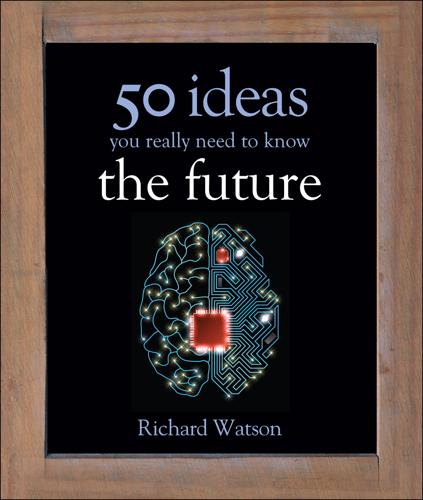
50 Future Ideas You Really Need to Know
by
Richard Watson
Published 5 Nov 2013
the condensed idea Don’t panic, we’re inventive timeline 1973 First oil crisis 2020 Launch of North African solar grid 2025 Oil, coal and gas still responsible for 70 percent of energy supply 2030 Global energy demand up by 50 percent over 2008 levels 2045 Clean energy islands built off the coast of China 2050 First commercial thorium reactor 08 Precision agriculture Global population growth (more precisely, global income growth) will challenge the ability of agriculture to deliver maximum productivity in the future, especially if climate change negatively affects agricultural yields. Until quite recently farmers used experience mixed with trial and error to produce crops, but things are changing down on the farm. “Precision agriculture” is a term used to describe the use of hyperspecific GPS (global positioning systems) and digital mapping to control precisely the application of seeds, pesticides and water to crops and, on occasion, to manage livestock.
…
ISBN 978-1-62365-195-4 Distributed in the United States and Canada by Random House Publisher Services c/o Random House, 1745 Broadway New York, NY 10019 www.quercus.com Contents Introduction POLITICS & POWER 01 Ubiquitous surveillance 02 Digital democracy 03 Cyber & drone warfare 04 Water wars 05 Wane of the West ENERGY & ENVIRONMENT 06 Resource depletion 07 Beyond fossil fuels 08 Precision agriculture 09 Population change 10 Geo-engineering THE URBAN LANDSCAPE 11 Megacities 12 Local energy networks 13 Smart cities 14 Next-generation transport 15 Extra-legal & feral slums TECHNOLOGICAL CHANGE 16 An internet of things 17 Quantum & DNA computing 18 Nanotechnology 19 Gamification 20 Artificial Intelligence HEALTH & WELL-BEING 21 Personalized genomics 22 Regenerative medicine 23 Remote monitoring 24 User-generated medicine 25 Medical data mining SOCIAL & ECONOMIC DIMENSIONS 26 Living alone 27 Dematerialization 28 Income polarization 29 What (& where) is work?

Blockchain Chicken Farm: And Other Stories of Tech in China's Countryside
by
Xiaowei Wang
Published 12 Oct 2020
The push in Guangzhou toward high-tech industries is an attempt to strengthen the Greater Bay Area of Shenzhen, Guangzhou, and Hong Kong into an economic powerhouse. It’s advantageous for XAG to be out here. There are few buildings around—it’s mainly mountains and construction sites. XAG has ambitious plans for new precision agriculture plots and vegetable beds outside its headquarters, for testing out new features on its drones. Its biggest competitor is DJI, a “unicorn” company valued at US$15 billion, just two hours away in nearby Shenzhen. The first thing I notice while talking to Wei is his optimism about the future.
…
Since the drones are more precise in their application of pesticides and fertilizers, farmers could save money on material costs. “Farmers think it’s really fashionable to use drones now, and they will tell their neighbors all about it,” the farm service company owner says. As of 2018, 5 percent of farming in China was done using precision agriculture. XAG drones are typically used by farms around three hectares in size, because of hardware constraints. Since 98 percent of farm households own small pieces of land less than two hectares, there remains ample room for market growth. With this potential boom and the scalability of Wei’s drone-pilot training, I wonder how long the field will continue to grow before there is an oversaturation of drone operators. 2.
…
I see a few of them at a corner table, sipping tea, picking at the edges of a bowl of rice, frenetically talking about business yields and the next quarter. Anne and I are wedged into a corner of the lobby. Next to our table is a quiet Japanese journalist who casually mentions that he is going to Xinjiang next week to report on precision agriculture in the region, a tumultuous part of the country that is responsible for 84 percent of China’s cotton production—no small feat given China’s status as the world’s second-largest cotton producer. When I ask if he speaks Mandarin or Uyghur, he shakes his head, holds up his phone, and says, “Google translate.”

Driverless: Intelligent Cars and the Road Ahead
by
Hod Lipson
and
Melba Kurman
Published 22 Sep 2016
We were introduced to Carl Wellington, another NREC researcher, whose work focuses on helping agricultural companies automate farming equipment. Modern agricultural practices are technologically sophisticated, using an approach called precision agriculture. Carl explained that farmers have used partially autonomous vehicles for more than a decade. In the early stages of automation, farmers equipped their tractors with highly accurate GPS systems and used farm management software to map out their fields. In the early days of precision agriculture, a human driver was still required. The first generation of autonomous agricultural vehicles, while capable of handling the straightaways, still needed a human driver to steer the tractor around the curves at the end of each field.
…
See National Highway Transportation and Safety Administration 1964 World’s Fair, 121 1939 World’s Fair, 107–110 NREC, 68–72 NVIDIA, 225 Object recognition, 87–90. See also Artificial perception Occupancy grid, 11, 93–95. See also Mid-level controls Operating systems. See Artificial Intelligence; Automotive operating system; Controls engineering; Robotic operating system Parking lots, 32–37 Perceptron, 202–206, 208, 209 Platooning, 30 Precision agriculture, 74 Pratt, Gill, 183 Privacy, 247, 248, 249 Public transportation, 40, 41, 42 Qualia, 231–233 Radar, 181–184 RCA, 116–120 Reactive controls. See Low-level controls Rebound effect, 25 Recombinant innovation, 166 Reliability, 67, 98–104, 195. See also Humansafe ratings Residual learning 228 Retail, 269–272 Road capacity, 30 Robotic density, 48 Robotic operating system Challenges of creating, 71–74 Overview of, 66, 67 See also CHIMP; Controls engineering Robot morality.
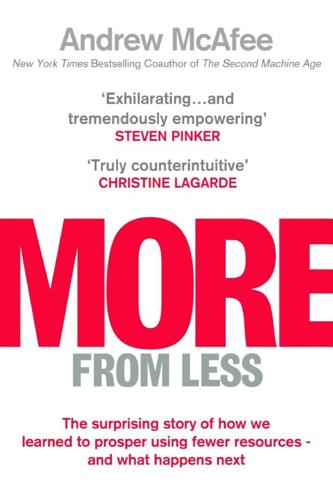
More From Less: The Surprising Story of How We Learned to Prosper Using Fewer Resources – and What Happens Next
by
Andrew McAfee
Published 30 Sep 2019
Technology: The Human Interface with the Material World One of my favorite definitions of technology comes from the philosopher Emmanuel Mesthene, who called it “the organization of knowledge for the achievement of practical purposes.” Sometimes that knowledge is crystallized into products such as hammers and iPhones, and sometimes it exists as techniques such as those for fracking or precision agriculture. Like knowledge itself, technologies accumulate. We haven’t forgotten about the lever, the plow, or the steam engine in the Second Machine Age, and we haven’t had to give them up to use cloud computing or drones. Like innovation itself, technologies are combinatorial; most of them are combinations or recombinations of existing things.
…
Agriculture. As we saw in chapter 5, leading farms have demonstrated an ability to increase their tonnage of output year after year while decreasing their use of inputs such as land, water, and fertilizer. This trend toward optimization will continue thanks to a set of innovations under the label precision agriculture. The precision comes from many sources, including better sensors of plant and animal health, soil quality and moisture, and so on; the ability to deliver fertilizer, pesticides, and water just where they’re needed; and machinery that adapts itself to each plant or animal. All these varieties of precision will combine to allow traditional farms to generate more from less.
…
King, 103 human capital, 233, 236, 261 human rights, 175–76 humanism, 37 Hungary, 174 hunting, 43, 44–45, 95–96, 183 hydroelectric power, 111 increasing returns to scale, 233 Index of Economic Freedom, 172 India, 85, 138, 147–48, 171–72, 174 Indonesia, 148 Industrial Era, 15–33, 56, 63, 99, 122, 130, 168, 177, 190 errors of, 35–51 Industrial Revolution, 16, 22 inequality, 128–29, 197–98, 206–10, 208 infant mortality, 28 urban, 23 innovation, 111–12, 114, 121–22, 141, 203 institutions, 159–61, 209 intellectual property, 116 internal combustion engine, 26–28, 30, 189 International Convention for the Regulation of Whaling, 163 International Rice Research Institute, 32 Internet, 169, 236 IPAT Model, 62, 63, 64 iPhone, 102, 111, 112, 235 Isenberg, Andrew, 44, 45 Ishokov, Aleksandr, 164 Ivashchenko, Yulia, 163 Jackson Hole National Monument, 260 Jacob, Jeffrey, 91 Jamaica, 37 Janah, Leila, 255–56 Japan, 106 Jevons, William, 47–48, 51, 56, 60, 63, 69, 77, 99, 108, 122, 141, 237 Jobs, Steve, 111, 112, 235 Johnson, Lyndon B., 29n Johnson, Tom, 171 Jones, Bruce, 174 journalism, 180 Kedrosky, Paul, 72 Keiser, David, 190 Khan Academy, 262 “Kissinger Report, The,” 56 Knowledge Illusion, The (Sloman and Fernbach), 226 Krauth, Tobias, 148 Lacey Act, 96 Lacey, John, 96 Lakner, Christoph, 221 Las Casas, Bartolomé de, 39–40 Laue, Max von, 30 Law on Cooperatives (1988), 171 Le Guin, Ursula K., 114–15 lead, 95 leather, 45 Leopold II, King of Belgium, 39 Li Keqiang, 146 Life, 61 life expectancy, 13, 32, 196–97 limits, imposing of, 65–67, 93–97 Limits to Growth, The, 57–58, 65, 66, 71, 93, 119–20 Lincoln, Abraham, 37, 38, 121 Linux operating system, 235–36 Litton, Martin, 61 living standards, 9–10, 32, 69 Lomborg, Bjorn, 179, 181 London, 22–23, 26 Lovins, Amory, 58–59 MacLeish, Archibald, 54 Macron, Emmanuel, 155, 250 Maddison, Angus, 9, 13 Maduro, Nicolas, 134–35, 137–38 Magee, Christopher, 73 Magie, Elizabeth, 203 Malthus, Thomas Robert, 7–8, 9, 10, 13, 15, 20, 131, 237 mammals, biomass of, 33 Mann, Charles, 31 manufacturing, 202, 239–40 Mao Zedong, 170 Marine Mammal Protection Act (1972), 96 market fundamentalism, 131–32, 133 Marshall, Alfred, 47–48, 50–51, 63, 99, 108–09, 141, 6977 Martha’s Vineyard Fishermen’s Preservation Trust, 263 Marx, Karl, 21, 130, 131 material intensity, 75 maternal mortality, 196–97 Mattis, James, 211–12 Maybach, Wilhelm, 27 Meadows, Donella, 57 Mesthene, Emmanuel, 114 metals, 56, 79 Mexico, 137, 139 Microsoft, 102, 257 Milanovic, Branko, 221 Mill, John Stuart, 180 Miller, Grant, 28 Mines Act (1842), 38 Mises, Ludwig von, 40 Mokyr, Joel, 122 Molina, Mario, 149 monopolies, 202–03, 204 Monsanto, 155 Montreal Protocol, 150, 249 Morris, Ian, 24–25, 60n Most Powerful Idea in the World, The (Rosen), 16 motors, 27 Mussolini, Benito, 40 Naam, Ramez, 31 National Security Council, 56 Native Americans, 44–45 natural gas, 103, 104, 109, 110, 188 Nature Wars (Sterba), 43–44 negative bias, 179–81 negative externalities, 142, 186, 247–48, 253 Nelson, Gaylord, 61 Neolithic revolution, 12 New Pioneers (Jacob), 91 New Testament, 127 New York Times, 53, 61–62, 147 Newcomen, Thomas, 16 Nicholas, Kim, 185 nitrogen, 30–31 nitrogen pollution, 190 Nixon, Richard, 66 Nokia, 102, 111 nonprofits, 259–63 Nordhaus, William, 248–49 Norquist, Grover, 132 North, Douglass, 159 North Korea, 133 nuclear energy, 58–59, 110, 251–52, 266 nuclear fusion, 240–41 Nunn, Nathan, 268 nutrition, 23–24, 32, 177, 193 ocean acidification, 190 O’Hanlon, Michael, 174 oil, 135–36 one-child policy, 93–94 Ostrom, Elinor, 182 Our World in Data (website), 179, 180 overdoses, 215, 216 ozone layer, 149–50, 228 Pacific Steam Navigation Company, 17 Paddock, William and Paul, 55–56 Paris Agreement, 158 partial excludability, 232–33 passenger pigeon, 42–43, 96, 152, 181 Pasteur, Louis, 23 Patagonia National Park, 260 patents, 19, 116, 232, 235 peak oil, 102–05 peak paper, 90, 113 “Peak Stuff” (Goodall), 76–77 pertussis, 227 Peru, 138 Petroleum Reitwagen, 27 phones, 168–69 Pinker, Steven, 37, 122, 176, 177, 179 Plain Cookery Book for the Working Classes, A (Francatelli), 23–24 plastics, 83, 252 plumbing, indoor, 26, 28–30, 168 Poland, 92 polarization, political, 224–25, 254 Politics of Resentment, The (Cramer), 221 pollution, 5, 23, 35, 36, 40–42, 54–55, 63, 66–67, 95, 141, 142, 157, 160–61, 167, 266 globalization of, 148–50 markets for, 143–44 Poole, Robert, 54 population, 13, 32–33, 62–63, 88, 192 of England, 10–11 global, 55–56, 65–69, 71 limiting, 93–94 oscillation in, 8–12, 15, 17, 31 Population Bomb, The (Ehrlich), 55, 65 poverty, 10–11, 179–80, 181, 189, 191–92, 215 Poverty and Famines (Sen), 69 precision agriculture, 242–43 price elasticity of demand, 49, 108–09 Principles of Economics (Marshall), 50–51 private ownership, 117, 170 “Problem of Social Cost, The” (Coase), 143 profit-seeking companies, 115–16 property rights, 116, 133 proteins, 239–40 public awareness, 3–4, 145–48, 153, 154, 158–59, 161, 167–68, 176–78, 226 Public Health Service, US, 55 Putnam, Robert, 212, 213 Radio Shack, 102 railroads, 18, 19, 26, 105–06, 109–10 Rand, Ayn, 132 rare earth elements (REE), 106–08, 109, 110 Reagan, Ronald, 132 rebound effect, 72–73 reciprocity, 212, 213, 217 recycling, 64–65, 90–91 reforestation, 184, 185 regulation, 5 regulatory capture, 129 religion, 115 renewable energy, 111 resource availability, 119–20 resource consumption, 56–58, 63–64, 78–79, 99, 119–20 responsive government, 3–4, 145–48, 153, 154, 158–59, 161, 167–68, 175–76 Return of Nature, The (Ausubel), 4–5 Ricardo, David, 19n Ridley, Matt, 161 Riley, James, 13 Ripley, S.

Machine, Platform, Crowd: Harnessing Our Digital Future
by
Andrew McAfee
and
Erik Brynjolfsson
Published 26 Jun 2017
Financial Times, October 19, 2015, https://www.ft.com/content/43f7436a-7632-11e5-a95a-27d368e1ddf7. 100 The driverless vehicles run twenty-four hours a day: Rio Tinto, “Driving Productivity in the Pilbara,” June 1, 2016, http://www.riotinto.com/ourcommitment/spotlight-18130_18328.aspx. 101 Automated milking systems: Janet Beekman and Robert Bodde, “Milking Automation Is Gaining Popularity,” Dairy Global, January 15, 2015, http://www.dairyglobal.net/Articles/General/2015/1/Milking-automation-is-gaining-popularity-1568767W. 101 Ninety percent of all crop spraying: Alltech, “Drones and the Potential for Precision Agriculture,” accessed January 30, 2017, http://ag.alltech.com/en/blog/drones-and-potential-precision-agriculture. 101 “radically simplify[ing] the environment”: David H. Autor, “Why Are There Still So Many Jobs? The History and Future of Workplace Automation,” Journal of Economic Perspectives 29, no. 3 (2015): 3–30, http://pubs.aeaweb.org/doi/pdfplus/10.1257/jep.29.3.3. 101 “Do you think when my grandfather”: Brian Scott, “55 Years of Agricultural Evolution,” Farmer’s Life (blog), November 9, 2015, http://thefarmerslife.com/55-years-of-agricultural-evolution-in-john-deere-combines. 102 Kiva was bought by Amazon in 2012: John Letzing, “Amazon Adds That Robotic Touch,” Wall Street Journal, March 20, 2012, http://www.wsj.com/articles/SB10001424052702304724404577291903244796214. 103 When Gill Pratt was a program manager at DARPA: John Dzieza, “Behind the Scenes at the Final DARPA Robotics Challenge,” Verge, June 12, 2015, http://www.theverge.com/2015/6/12/8768871/darpa-robotics-challenge-2015-winners. 104 250 million tons: PlasticsEurope, “Plastics—the Facts 2014/2015: An Analysis of European Plastics Production, Demand and Waste Data,” 2015, http://www.plasticseurope.org/documents/document/20150227150049-final_plastics_the_facts_2014_2015_260215.pdf. 105 About thirty years ago: PlasticsEurope, “Automotive: The World Moves with Plastics,” 2013, http://www.plasticseurope.org/cust/documentrequest.aspx?
…
Information gained from these daily flyovers enables a much deeper understanding of change over time with a given crop, and also enables much more precise targeting of water, fertilizer, and pesticides. Modern agricultural equipment often has the capability to deliver varying amounts of these critical ingredients foot by foot, rather than laying down a uniform amount. Drone data helps make the most of this capability, enabling farmers to move deeper into the era of precision agriculture. It’s likely that drones will soon also be used by insurance companies to assess how badly a roof was damaged after a tornado, to help guard herds of endangered animals against poaching and remote forests against illegal logging, and for many other tasks. They’re already being used to inspect equipment that would be dull, dirty, dangerous, or dear to get to.
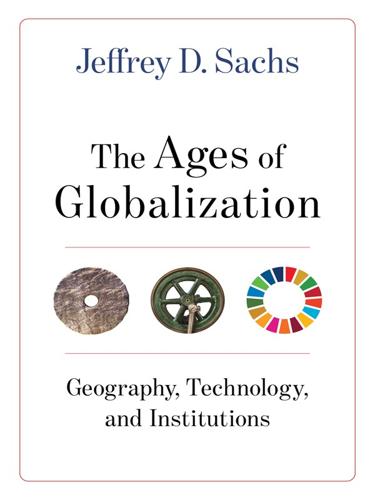
The Ages of Globalization
by
Jeffrey D. Sachs
Published 2 Jun 2020
Another opportunity is the shift in diet from heavy meat eating, especially beef eating, toward the use of more plant proteins, which would improve human health while also reducing the pressures on land for feed grains and pastures. A third opportunity is improved building designs, which can greatly reduce the need for heating and cooling and thereby the demand for energy. A fourth opportunity is precision agriculture, meaning more precise applications of water and fertilizers—for example, through drip irrigation and fertigation (direct injection of the fertilizers via the irrigation system). The key to sustainability, in short, is the transformation of technologies and behaviors (such as plant-based diets, or choosing walking over driving) that can deliver the same GDP or higher GDP with a lower environmental impact.
…
Environmental degradation is rampant, a reflection of a global economy that has reached nearly $100 trillion in annual output without taking care to ensure that the impacts on the planet are kept to a safe and sustainable level. And the risk of conflict is rising, especially given the rapid shifts in geopolitics, and the anxieties that are being created in the US, China, and elsewhere. All is not lost—not by a longshot. Humanity has the low-impact technologies (such as renewable energy and precision agriculture) and the policy knowhow needed to head off the environmental crises. We also have the benefit of global experience, if we choose to use it, to redistribute income from the rich to the poor, while finding diplomatic solutions to rising geopolitical tensions. We even have a new globally agreed approach to governance—sustainable development—that can provide a roadmap for action.
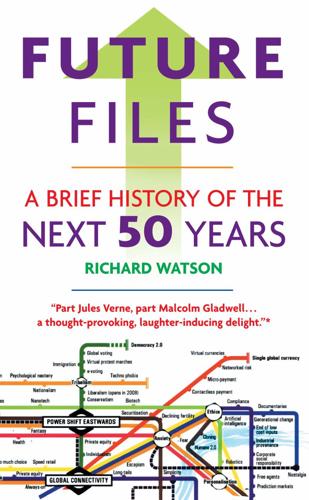
Future Files: A Brief History of the Next 50 Years
by
Richard Watson
Published 1 Jan 2008
When compared with people not having enough to eat, probably yes; and while there are some very real concerns about semi-farmed fish mingling with the wild variety, people are ultimately more important than fish — or at least, human lives are more important than the genetic purity of plants or animals. It’s progress; get over it. Back on dry land we’ll see some dramatic changes too. “Precision agriculture” is an idea whereby farmland is monitored 182 FUTURE FILES and controlled meter by meter, with seeds sown at exactly the correct time and fertilizers and pesticides applied almost on a plantby-plant basis. Similar techniques exist for cattle, allowing individual herds to be monitored and controlled by satellite and the history of an individual animal to be tracked from paddock to plate.
…
A 311 Index ‘O’ Garage 170 3D printers 56 accelerated education 57 accidents 159, 161–6, 173, 246 ACNielsen 126 adaptive cruise control 165 Adeg Aktiv 50+ 208 advertising 115–16, 117, 119 Africa 70, 89, 129, 174, 221, 245, 270, 275, 290, 301 ageing 1, 10, 54, 69, 93, 139, 147–8, 164, 188, 202, 208, 221, 228–9, 237, 239, 251, 261, 292, 295, 297–8 airborne networks 56 airlines 272 allergies 196–7, 234, 236 Alliance Against Urban 4x4s 171 alternative energy 173 alternative futures viii alternative medicine 244–5 alternative technology 151 amateur production 111–12 Amazon 32, 113–14, 121 American Apparel 207 American Express 127–8 androids 55 Angola 77 anti-ageing drugs 231, 237 anti-ageing foods 188 anti-ageing surgery 2, 237 antibiotics 251 anxiety 10, 16, 30, 32, 36, 37, 128, 149, 179, 184, 197, 199, 225, 228, 243, 251, 252, 256, 263, 283–4, 295–6, 300, 301, 305 Apple 61, 115, 121, 130, 137–8, 157 Appleyard, Bryan 79 Argentina 210 Armamark Corporation 193 artificial intelliegence 22, 40, 44, 82 131, 275, 285–6, 297, 300 Asda 136, 137 Asia 11, 70, 78, 89, 129, 150, 174, 221, 280, 290, 292 Asimov, Isaac 44 Asos.com 216 asthma 235 auditory display software 29 Australia 20–21, 72–3, 76, 92, 121, 145, 196, 242, 246, 250, 270, 282 Austria 208 authenticity 32, 37, 179, 194, 203–11 authoritarianism 94 automated publishing machine (APM) 114 automation 292 automotive industry 154–77 B&Q 279 baby boomers 41, 208 bacterial factories 56 Bahney, Anna 145 Bahrain 2 baking 27, 179, 195, 199 Bangladesh 2 bank accounts, body double 132 banknotes 29, 128 banks 22, 123, 135–8, 150, 151 virtual 134 Barnes and Noble 114 bartering 151 BBC 25, 119 Become 207 Belgium 238 313 314 benriya 28 Berlusconi, Silvio 92 Best Buy 223 biofuel 64 biomechatronics 56 biometric identification 28, 35, 52, 68, 88, 132 bionic body parts 55 Biosphere Expeditions 259 biotechnology 40, 300 blended families 20 blogs 103, 107, 109, 120 Blurb 113 BMW 289 board games 225 body double bank accounts 132 body parts bionic 55 replacement 2, 188, 228 Bolivia 73 Bollywood 111 books 29, 105, 111–25 boomerang kids 145 brain transplants 231 brain-enhancing foods 188 Brazil 2, 84, 89, 173, 247, 254, 270, 290 Burger King 184 business 13, 275–92 Bust-Up 189 busyness 27, 195, 277 Calvin, Bill 45 Canada 63, 78, 240 cancer 251 car sharing 160, 169, 176 carbon credits 173 carbon footprints 255 carbon taxes 76, 172 cars classic 168–9 driverless 154–5 flying 156, 165 hydrogen-powered 12, 31, 157, 173 pay-as-you-go 167–8 self-driving 165 cascading failure 28 cash 126–7, 205 cellphone payments 129, 213 cellphones 3, 25, 35, 51, 53, 120, 121, FUTURE FILES 129, 156, 161, 251 chicken, Christian 192 childcare robots 57 childhood 27, 33–4, 82–3 children’s database 86 CHIME nations (China, India, Middle East) 2, 10, 81 China 2, 10, 11, 69–72, 75–81, 88, 92–3, 125, 137, 139–40, 142, 151, 163, 174–5, 176, 200, 222, 228, 247, 260, 270–71, 275, 279, 295, 302 choice 186–7 Christian chicken 192 Christianity, muscular 16, 73 Chrysler 176 cinema 110–11, 120 Citibank 29, 128 citizen journalism 103–4, 108 City Car Club 168 Clarke, Arthur C. 58–9 Clarke’s 187 classic cars 168–9 climate change 4, 11, 37, 43, 59, 64, 68, 74, 77–9, 93, 150, 155, 254, 257, 264, 298–9 climate-controlled buildings 254, 264 cloning 38 human 23, 249 CNN 119 coal 176 Coca-Cola 78, 222–3 co-creation 111–12, 119 coins 29, 128, 129 collective intelligence 45–6 Collins, Jim 288 comfort eating 200 Comme des Garçons 216 community 36 compassion 120 competition in financial services 124–5 low-cost 292 computers disposable 56 intelligent 23, 43 organic 56 wearable 56, 302 computing 3, 33, 43, 48, 82 connectivity 3, 10, 11, 15, 91, 120, Index 233, 261, 275–6, 281, 292, 297, 299 conscientious objection taxation 86 contactless payments 123, 150 continuous partial attention 53 control 36, 151, 225 convenience 123, 178–9, 184, 189, 212, 223, 224 Coren, Stanley 246 corporate social responsibility 276, 282, 298 cosmetic neurology 250 Costa Rica 247 Craig’s List 102 creativity 11, 286; see also innovation credit cards 141–3, 150 crime 86–9 forecasting 86–7 gene 57, 86 Croatia 200 Crowdstorm 207 Cuba 75 cultural holidays 259, 273 culture 11, 17–37 currency, global 127, 151 customization 56, 169, 221–2, 260 cyberterrorism 65, 88–9 Cyc 45 cynicism 37 DayJet 262 death 237–9 debt 123–4, 140–44, 150 defense 63, 86 deflation 139 democracy 94 democratization of media 104, 108, 113 demographics 1, 10, 21, 69, 82, 93, 202, 276, 279–81, 292, 297–8 Denmark 245 department stores 214 deregulation 11, 3 Destiny Health 149 detox 200 Detroit Project 171 diagnosis 232 remote 228 digital downloads 121 evaporation 25 315 immortality 24–5 instant gratification syndrome 202 Maoism 47 money 12, 29, 123, 126–7, 129, 132, 138, 150, 191 nomads 20, 283 plasters 241 privacy 25, 97, 108 readers 121 digitalization 37, 292 Dinner by Design 185 dirt holidays 236 discount retailers 224 Discovery Health 149 diseases 2, 228 disintegrators 57 Disney 118–19 disposable computers 56 divorce 33, 85 DNA 56–7, 182 database 86 testing, compulsory 86 do-it-yourself dinner shops 185–6 dolls 24 doorbells 32 downshifters 20 Dream Dinners 185 dream fulfillment 148 dressmaking 225 drink 178–200 driverless cars 154–5 drugs anti-ageing 231, 237 performance-improving 284–5 Dubai 264, 267, 273 dynamic pricing 260 E Ink 115 e-action 65 Earthwatch 259 Eastern Europe 290 eBay 207 e-books 29, 37, 60, 114, 115, 302 eco-luxe resorts 272 economic collapse 2, 4, 36, 72, 221, 295 economic protectionism 10, 15, 72, 298 economy travel 272 316 Ecuador 73 education 15, 18, 82–5, 297 accelerated 57 lifelong learning 290 Egypt 2 electricity shortages 301 electronic camouflage 56 electronic surveillance 35 Elephant 244 email 18–19, 25, 53–4, 108 embedded intelligence 53, 154 EMF radiation 251 emotional capacity of robots 40, 60 enclosed resorts 273 energy 72, 75, 93 alternative 173 nuclear 74 solar 74 wind 74 enhancement surgery 249 entertainment 34, 121 environment 4, 10, 11, 14, 64, 75–6, 83, 93, 155, 171, 173, 183, 199, 219–20, 252, 256–7, 271, 292, 301 epigenetics 57 escapism 16, 32–3, 121 Estonia 85, 89 e-tagging 129–30 e-therapy 242 ethical bankruptcy 35 ethical investing 281 ethical tourism 259 ethics 22, 24, 41, 53, 78, 86, 132, 152, 194, 203, 213, 232, 238, 249–50, 258, 276, 281–2, 298–9 eugenics 252 Europe 11, 70, 72, 81, 91, 141, 150, 174–5, 182, 190, 192, 209 European Union 15, 139 euthanasia 238, 251 Everquest 33 e-voting 65 experience 224 extended financial families 144 extinction timeline 9 Facebook 37, 97, 107 face-recognition doors 57 fakes 32 family 36, 37 FUTURE FILES family loans 145 fantasy-related industries 32 farmaceuticals 179, 182 fast food 178, 183–4 fat taxes 190 fear 10, 34, 36, 38, 68, 150, 151, 305 female-only spaces 210–11, 257 feminization 84 financial crisis 38, 150–51, 223, 226, 301 financial services 123–53, 252 trends 123–5 fish farming 181 fixed-price eating 200 flashpacking 273 flat-tax system 85–6 Florida, Richard 36, 286, 292 flying cars 165 food 69–70, 72, 78–9, 162, 178–201 food anti-ageing 188 brain-enhancing 188 fast 178, 183–4 functional 179 growing your own 179, 192, 195 history 190–92 passports 200 slow 178, 193 tourism 273 trends 178–80 FoodExpert ID 182 food-miles 178, 193, 220 Ford 169, 176, 213, 279–80 forecasting 49 crime 86–7 war 49 Forrester Research 132 fractional ownership 168, 175, 176, 225 France 103, 147, 170, 189, 198, 267 Friedman, Thomas 278–9, 292 FriendFinder 32 Friends Reunited 22 frugality 224 functional food 179 Furedi, Frank 68 gaming 32–3, 70, 97, 111–12, 117, 130, 166, 262 Gap 217 Index gardening 27, 148 gas 176 GE Money 138, 145 gendered medicine 244–5 gene silencing 231 gene, crime 86 General Motors 157, 165 Generation X 41, 281 Generation Y 37, 41, 97, 106, 138, 141–2, 144, 202, 208, 276, 281, 292 generational power shifts 292 Genes Reunited 35 genetic enhancement 40, 48 history 35 modification 31, 182 testing 221 genetics 3, 10, 45, 251–2 genomic medicine 231 Germany 73, 147, 160, 170, 204–5, 216–17, 261, 267, 279, 291 Gimzewski, James 232 glamping 273 global currency 127 global warming 4, 47, 77, 93, 193, 234 globalization 3, 10, 15–16, 36–7, 63–7, 72–3, 75, 81–2, 88, 100, 125, 139, 143, 146, 170, 183, 189, 193–5, 221, 224, 226, 233–4, 247–8, 263, 275, 278–80, 292, 296, 299 GM 176 Google 22, 61, 121, 137, 293 gout 235 government 14, 18, 36, 63–95, 151 GPS 3, 15, 26, 50, 88, 138, 148, 209, 237, 262, 283 Grameen Bank 135 gravity tubes 57 green taxes 76 Greenpeace 172 GRIN technologies (genetics, robotics, internet, nanotechnology) 3, 10, 11 growing your own food 178, 192, 195 Gucci 221 Gulf States 125, 260, 268 H&M 217 habitual shopping 212 Handy, Charles 278 317 Happily 210 happiness 63–4, 71–2, 146, 260 health 15, 82, 178–9, 199 health monitoring 232, 236, 241 healthcare 2, 136, 144, 147–8, 154, 178–9, 183–4, 189–91, 228–53, 298; see also medicine trends 214–1534–7 Heinberg, Richard 74 Helm, Dieter 77 Heritage Foods 195 hikikomori 18 hive mind 45 holidays 31, 119; see also tourism holidays at home 255 cultural 259 dirt 236 Hollywood 33, 111–12 holographic displays 56 Home Equity Share 145 home baking 225 home-based microgeneration 64 home brewing 225 honesty 152 Hong Kong 267 hospitals 228, 241–3, 266 at home 228, 238, 240–42 hotels 19, 267 sleep 266 human cloning 23, 249 Hungary 247 hybrid humans 22 hydrogen power 64 hydrogen-powered cars 12, 31, 157, 173 Hyperactive Technologies 184 Hyundai 170 IBM 293 identities, multiple 35, 52 identity 64, 71 identity theft 88, 132 identity verification, two-way 132 immigration 151–2, 302 India 2, 10, 11, 70–72, 76, 78–9, 81, 92, 111, 125, 135, 139, 163, 174–5, 176, 247, 249–50, 254, 260, 270, 275, 279, 302 indirect taxation 86 318 individualism 36 Indonesia 2, 174 industrial robots 42 infinite content 96–7 inflation 151 information overlead 97, 120, 159, 285; see also too much information innovation 64, 81–2, 100, 175, 222, 238, 269, 277, 286–8, 291, 297, 299 innovation timeline 8 instant gratification 213 insurance 123, 138, 147–50, 154, 167, 191, 236, 250 pay-as-you-go 167 weather 264 intelligence 11 embedded 53, 154 implants 229 intelligent computers 23, 43 intelligent night vision 162–3 interaction, physical 22, 25, 97, 110, 118, 133–4, 215, 228, 243, 276, 304 interactive media 97, 105 intergenerational mortgages 140, 144–5 intermediaries 123, 135 internet 3, 10, 11, 17–18, 25, 68, 103, 108, 115–17, 124, 156, 240–41, 261, 270, 283, 289, 305 failure 301 impact on politics 93–4 sensory 56 interruption science 53 iPills 240 Iran 2, 69 Ishiguro, Hiroshi 55 Islamic fanaticism 16 Italy 92, 170, 198–9 iTunes 115, 130; see also Apple Japan 1, 18, 26, 28–9, 54–5, 63, 80–81, 114, 121, 128–9, 132, 140, 144–5, 147, 174, 186, 189, 192, 196, 198, 200, 209–10, 223, 240, 260, 264, 271, 279, 291 jetpacks 60 job security 292 journalism 96, 118 journalism, citizen 103–4, 107 joy-makers 57 FUTURE FILES Kaboodle 207 Kapor, Mitchell 45 Kenya 128 keys 28–9 Kindle 60, 121 Kramer, Peter 284 Kuhn, Thomas 281 Kurzweil, Ray 45 Kuwait 2 labor migration 290–91 labor shortages 3, 80–81, 289–90 Lanier, Jaron 47 laser shopping 212 leisure sickness 238 Let’s Dish 185 Lexus 157 libraries 121 Libya 73 life-caching 24, 107–8 lighting 158, 160 Like.com 216 limb farms 249 limited editions 216–17 live events 98, 110, 304 localization 10, 15–16, 116, 128, 170, 178, 189, 193, 195, 215, 220, 222–3, 224, 226, 255, 270, 297 location tagging 88 location-based marketing 116 longevity 188–9, 202 Longman, Philip 71 low cost 202, 219–22 luxury 202, 221, 225, 256, 260, 262, 265–6, 272 machinamas 112 machine-to-machine communication 56 marketing 115–16 location-based 116 now 116 prediction 116 Marks & Spencer 210 Maslow, Abraham 305–6 masstigue 223 materialism 37 Mayo Clinic 243 McDonald’s 130, 168, 180, 184 McKinsey 287 Index meaning, search for 16, 259, 282, 290, 305–6 MECU 132 media 96–122 democratization of 104, 108, 115 trends 96–8 medical outsourcing 247–8 medical tourism 2, 229, 247 medicine 188, 228–53; see also healthcare alternative 243–4 gendered 244–5 genomic 231 memory 229, 232, 239–40 memory loss 47 memory pills 231, 240 memory recovery 2, 228–9, 239 memory removal 29–30, 29, 240 Menicon 240 mental health 199 Meow Mix 216 Merriman, Jon 126 metabolomics 56 meta-materials 56 Metro 204–5 Mexico 2 micromedia 101 micro-payments 130, 150 Microsoft 137, 147, 293 Middle East 10, 11, 70, 81, 89, 119, 125, 129, 139, 174–5, 268, 301 migration 3, 11, 69–70, 78, 82, 234, 275, 290–91 boomerang 20 labor 290–91 Migros 215 military recruitment 69 military vehicles 158–9 mind-control toys 38 mindwipes 57 Mitsubishi 198, 279 mobile payments 123, 150 Modafinil 232 molecular biology 231 monetization 118 money 123–52 digital 12, 29, 123, 126–7, 129, 132, 138, 150, 191 monitoring, remote 154, 168, 228, 242 monolines 135, 137 319 mood sensitivity 41, 49, 154, 158, 164, 187–8 Morgan Stanley 127 mortality bonds 148 Mozilla Corp. 289 M-PESA 129 MTV 103 multigenerational families 20 multiple identities 35, 52 Murdoch, Rupert 109 muscular Christianity 16, 73 music industry 121 My-Food-Phone 242 MySpace 22, 25, 37, 46, 97, 107, 113 N11 nations (Bangladesh, Egypt, Indonesia, Iran, South Korea, Mexico, Nigeria, Pakistan, Philippines, Turkey, Vietnam) 2 nanoelectronics 56 nanomedicine 32 nanotechnology 3, 10, 23, 40, 44–5, 50, 157, 183, 232, 243, 286, 298 napcaps 56 narrowcasting 109 NASA 25, 53 nationalism 16, 70, 72–3, 139, 183, 298, 302 natural disasters 301 natural resources 2, 4, 11, 64, 298–9 Nearbynow 223 Nestlé 195 Netherlands 238 NetIntelligence 283 networkcar.com 154 networks 28, 166, 288 airborne 56 neural nets 49 neuronic whips 57 neuroscience 33, 48 Neville, Richard 58–9 New Economics Foundation 171 New Zealand 265, 269 newspapers 29, 102–9, 117, 119, 120 Nigeria 2, 73 Nike 23 nimbyism 63 no-frills 224 Nokia 61, 105 Norelift 189 320 Northern Rock 139–40 Norwich Union 167 nostalgia 16, 31–2, 51, 169–70, 179, 183, 199, 203, 225, 303 now marketing 116 nuclear annihilation 10, 91 nuclear energy 74 nutraceuticals 179, 182 Obama, Barack 92–3 obesity 75, 190–92, 199, 250–51 oceanic thermal converters 57 oil 69, 72–3, 93, 151, 174, 176, 272, 273, 301 Oman 2, 270 online relationships 38 organic computers 56 organic food 200, 226 osteoporosis 235 outsourcing 224, 292 Pakistan 2 pandemics 4, 10, 16, 59, 72, 128, 232, 234, 272, 295–7, 301 paper 37 parasite singles 145 passwords 52 pictorial 52 pathogens 233 patient simulators 247 patina 31 patriotism 63, 67, 299 pay-as-you-go cars 167–8 pay-as-you-go insurance 167 payments cellphone 129, 213 contactless 123, 150 micro- 130, 150 mobile 123, 150 pre- 123, 150 PayPal 124, 137 Pearson, Ian 44 performance-improving drugs 284–5 personal restraint 36 personal robots 42 personalization 19, 26, 56, 96–8, 100, 102–3, 106, 108–9, 120, 138, 149, 183, 205–6, 223, 244–5, 262, 267, 269 Peru 73 FUTURE FILES Peters, Tom 280 Pharmaca 244 pharmaceuticals 2, 33, 228, 237 Philippines 2, 212, 290 Philips 114 Philips, Michael 232–3 photographs 108 physical interaction 22, 25, 97, 110, 118, 133–4, 215, 228, 243, 276, 304 physicalization 96–7, 101–2, 106, 110, 120 pictorial passwords 52 piggy banks 151 Pink, Daniel 285 plagiarism 83 polarization 15–16, 285 politics 37, 63–95, 151–2 regional 63 trends 63–5 pop-up retail 216, 224 pornography 31 portability 178, 183–4 power shift eastwards 2, 10–11, 81, 252 Prada 205–6, 216 precision agriculture 181–2 precision healthcare 234–7 prediction marketing 116 predictions 37, 301–2 premiumization 223 pre-payments 123, 150 privacy 3, 15, 41, 50, 88, 154, 165–7, 205, 236, 249, 285, 295 digital 25, 97, 108 Procter & Gamble 105, 280 product sourcing 224 Prosper 124, 135 protectionism 67, 139, 156, 220, 226, 301 economic 10, 15, 72, 299 provenance 178, 193, 226 proximity indicators 32 PruHealth 149 psychological neoteny 52 public ownership 92 public transport 171 purposeful shopping 212 Qatar 2 quality 96–7, 98, 101, 109 Index quantum mechanics 56 quantum wires 56 quiet materials 56 radiation, EMF 251 radio 117 randominoes 57 ranking 34, 83, 109, 116, 134, 207 Ranking Ranqueen 186 reality mining 51 Really Cool Foods 185 rebalancing 37 recession 139–40, 202, 222 recognition 36, 304 refrigerators 197–8 refuge 121 regeneration 233 regional food 200 regional politics 63 regionality 178, 192–3 regulation 124, 137, 143 REI 207 Reid, Morris 90 relationships, online 38 religion 16, 58 remote diagnosis 228 remote monitoring 154, 168, 228, 242 renting 225 reputation 34–5 resistance to technology 51 resorts, enclosed 273 resource shortages 11, 15, 146, 155, 178, 194, 254, 300 resources, natural 2, 4, 11, 64, 73–4, 143, 298–9 respect 36, 304 restaurants 186–8 retail 20–21, 202–27, 298 pop-up 216, 224 stealth 215 theater 214 trends 202–3 Revkin, Andy 77 RFID 3, 24, 50, 121, 126, 149, 182, 185, 192, 196, 205 rickets 232 risk 15, 124, 134, 138, 141, 149–50, 162, 167, 172, 191, 265, 299–300, 303 Ritalin 232 321 road pricing 166 Robertson, Peter 49 robogoats 55 robot department store 209 Robot Rules 44 robotic assistants 54, 206 concierges 268 financial advisers 131–2 lobsters 55 pest control 57 soldiers 41, 55, 60 surgery 35, 41, 249 robotics 3, 10, 41, 44–5, 60, 238, 275, 285–6, 292, 297 robots 41, 54–5, 131, 237, 249 childcare 57 emotional capacity of 40, 60 industrial 42 personal 42 security 209 therapeutic 41, 54 Russia 2, 69, 72, 75, 80, 89, 92–3, 125, 174, 232, 254, 270, 295, 302 safety 32, 36, 151, 158–9, 172–3, 182, 192, 196 Sainsbury’s 215 Salt 187 sanctuary tourism 273 satellite tracking 166–7 Saudi Arabia 2, 69 Schwartz, Barry 186 science 13, 16, 40–62, 300 interruption 53 trends 40–42 scramble suits 57 scrapbooking 25, 108, 225 Sears Roebuck 137 seasonality 178, 193–4 second-hand goods 224 Second Life 133, 207–8 securitization 124, 140 security 16, 31, 151 security robots 209 self-driving cars 165 self-medication 242 self-publishing 103, 113–14 self-reliance 35, 75 self-repairing roads 57 322 self-replicating machines 23, 44 Selfridges 214 sensor motes 15, 50, 196 sensory internet 56 Sharia-based investment 125 Shop24 209 shopping 202–27 habitual 212 laser 212 malls 211–5 purposeful 212 slow 213 social 207 Shopping 2.0 224 short-wave scalpels 57 silicon photonics 56 simplicity 169–70, 179, 186, 202, 218, 224, 226, 272 Singapore 241 single-person households 19–20, 202–3, 208–9, 221, 244, 298, 304 skills shortage 293, 302 sky shields 57 sleep 159–60, 188, 228, 231, 246–7, 265 sleep debt 96, 266 sleep hotels 266 sleep surrogates 57 slow food 178, 193 slow shopping 213 slow travel 273 smart devices 26–7, 28, 32, 35, 44, 50, 56, 57, 164, 206, 207 smart dust 3, 15, 50, 196 smartisans 20 Smartmart 209 snakebots 55 social networks 97, 107, 110, 120, 133, 217, 261 social shopping 207 society 13, 15–16, 17–37 trends 15–16 Sodexho 193 solar energy 74 Sony 114, 121 South Africa 84, 149, 242 South America 82, 270 South Korea 2, 103, 128–9 space ladders 56 space mirrors 47 space tourism 271, 273 FUTURE FILES space tugs 57 speed 164, 202, 209, 245, 296–7 spirituality 16, 22, 282, 298, 306 spot knowledge 47 spray-on surgical gloves 57 St James’s Ethics Centre 282 stagflation 139 starch-based plastics 64 stealth retail 215 stealth taxation 86 Sterling, Bruce 55 storytelling 203 Strayer, David 161 street signs 162–3 stress 32, 96, 235, 243, 245–6, 258–9, 265, 257–9, 275, 277, 283–5 stress-control clothing 57 stupidity 151, 302 Stylehive 207 Sudan 73 suicide tourism 236 Super Suppers 185 supermarkets 135–6, 184–6, 188, 191–2, 194, 202–3, 212, 215, 218–19, 224, 229 surgery 2, 31 anti-ageing 2, 237 enhancement 249 Surowiecki, James 45 surveillance 35, 41 sustainability 4, 37, 74, 181, 193–5, 203, 281, 288, 298–9 Sweden 84 swine flu 38, 251, 272 Switzerland 168, 210, 215 synthetic biology 56 Taco Bell 184 Tactical Numerical Deterministic Model 49 tagging, location 86, 88 Taiwan 81 talent, war for 275, 279, 293; see also labor shortages Target 216 Tasmania 267 Tata Motors 174, 176 taxation 85–6, 92, 93 carbon 76, 172 conscientious objection 86 Index fat 190 flat 85–6 green 76 indirect 86 stealth 86 Tchibo 217 technology 3, 14–16, 18, 22, 26, 28, 32, 37, 40–62, 74–5, 82–3, 96, 119, 132, 147–8, 154, 157, 160, 162, 165–7, 178, 182, 195–8, 208, 221, 229, 237, 242–3, 249, 256, 261, 265–6, 268, 275–6, 280, 283–4, 292, 296–7, 300 refuseniks 30, 51, 97 trends 40–42 telemedicine 228, 238, 242 telepathy 29 teleportation 56 television 21, 96, 108, 117, 119 terrorism 67, 91, 108, 150, 262–3, 267, 272, 295–6, 301 Tesco 105, 135–6, 185, 206, 215, 219, 223 Thailand 247, 290 therapeutic robots 41, 54 thermal imaging 232 things that won’t change 10, 303–6 third spaces 224 ThisNext 207 thrift 224 Tik Tok Easy Shop 209 time scarcity 30, 96, 102, 178, 184–6, 218, 255 time shifting 96, 110, 116 time stamps 50 timeline, extinction 9 timeline, innovation 8 timelines 7 tired all the time 246 tobacco industry 251 tolerance 120 too much choice (TMC) 29, 202, 218–19 too much information (TMI) 29, 51, 53, 202, 229; see also information overload tourism 254–74 cultural 273 ethical 259 food 273 323 local 273 medical 2, 229, 247 sanctuary 273 space 271, 273 suicide 238 tribal 262 Tourism Concern 259 tourist quotas 254, 271 Toyota 48–9, 157 toys, mind-control 38 traceability 195 trading down 224 transparency 3, 15, 143, 152, 276, 282, 299 transport 15, 154–77, 298 public 155, 161 trends 154–6 transumerism 223 travel 2, 3, 11, 148, 254–74 economy 272 luxury 272 slow 273 trends 254–6 trend maps 6–7 trends 1, 5–7, 10, 13 financial services 123–5 food 178–80 healthcare 228–9 media 96–8 politics 63–5 retail 202–3 science and technology 40–42 society 15–16 transport 154–6 travel 254–6 work 275–7 tribal tourism 262 tribalism 15–16, 63, 127–8, 183, 192, 220, 260 trust 82, 133, 137, 139, 143, 192, 203, 276, 282–3 tunnels 171 Turing test 45 Turing, Alan 44 Turkey 2, 200, 247 Twitter 60, 120 two-way identity verification 132 UAE 2 UFOs 58 324 UK 19–20, 72, 76, 84, 86, 90–91, 100, 102–3, 105, 128–9, 132, 137, 139–42, 147–9, 150, 163, 167–8, 170–71, 175, 185, 195–6, 199, 200, 206, 210, 214–16, 238, 259, 267–8, 278–9, 284, 288 uncertainty 16, 30, 34, 52, 172, 199, 246, 263, 300, 303 unemployment 151 Unilever 195 University of Chicago 245–6 urban rental companies 176 urbanization 11, 18–19, 78, 84, 155, 233 Uruguay 200 US 1, 11, 19–21, 23, 55–6, 63, 67, 69, 72, 75, 77, 80–83, 86, 88–90, 92, 104–5, 106, 121, 129–33, 135, 139–42, 144, 147, 149, 150, 151, 162, 167, 169–71, 174, 185, 190–3, 195, 205–6, 209, 211, 213, 216, 218, 220, 222–3, 237–8, 240–8, 250, 260, 262, 267–8, 275, 279–80, 282–4, 287, 291 user-generated content (UGC) 46, 97, 104, 289 utility 224 values 36, 152 vending machines 209 Venezuela 69, 73 verbal signatures 132 VeriChip 126 video on demand 96 Vietnam 2, 290 Vino 100 113 Virgin Atlantic 261 virtual adultery 33 banks 134 economy 130–31 protests 65 reality 70 sex 32 stores 206–8 vacations 32, 261 worlds 157, 213, 255, 261, 270, 305 Vocation Vacations 259–60 Vodafone 137 voice recognition 41 voice-based internet search 56 voicelifts 2, 237 FUTURE FILES Volkswagen 175 voluntourism 259 Volvo 164 voting 3, 68, 90–91 Walgreens 244 Wal-Mart 105, 136–7, 215, 219–20, 223, 244, 282 war 68–9, 72 war for talent 275, 279; see also labor shortages war forecasting 49 water 69–70, 74, 77–9, 199 wearable computers 55 weather 64 weather insurance 264 Web 2.0 93, 224 Weinberg, Peter 125 wellbeing 2, 183, 188, 199 white flight 20 Wikipedia 46, 60, 104 wild swimming 273 Wilson, Edward O. 74 wind energy 74 wine producers 200 wisdom of idiots 47 Wizard 145 work 275–94 trends 275–94 work/life balance 64, 71, 260, 277, 289, 293 worldphone 19 xenophobia 16, 63 YouTube 46, 103, 107, 112 Zara 216–17 Zipcar 167 Zopa 124, 134
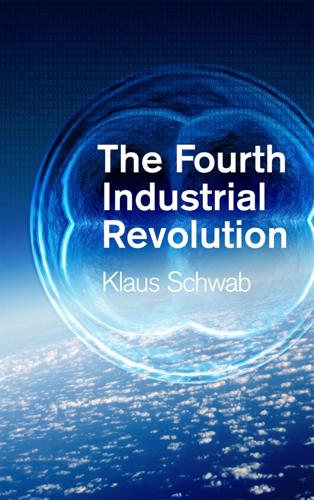
The Fourth Industrial Revolution
by
Klaus Schwab
Published 11 Jan 2016
This technology could be used in clothing or footwear, as well as in health-related products such as implants designed to adapt to the human body. Advanced robotics Until recently, the use of robots was confined to tightly controlled tasks in specific industries such as automotive. Today, however, robots are increasingly used across all sectors and for a wide range of tasks from precision agriculture to nursing. Rapid progress in robotics will soon make collaboration between humans and machines an everyday reality. Moreover, because of other technological advances, robots are becoming more adaptive and flexible, with their structural and functional design inspired by complex biological structures (an extension of a process called biomimicry, whereby nature’s patterns and strategies are imitated).
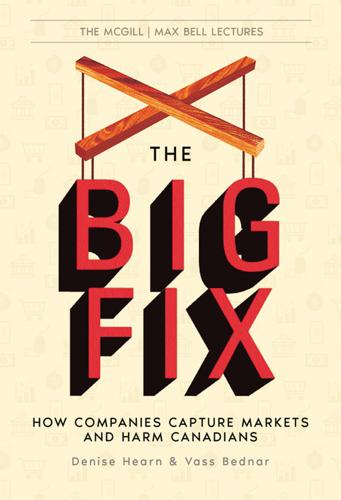
The Big Fix: How Companies Capture Markets and Harm Canadians
by
Denise Hearn
and
Vass Bednar
Published 14 Oct 2024
Their 2023 annual report states that they increased revenue in the health services division by 87 percent from 2022 (from $913 million in 2022 to 1.7 billion in 2023).136 The company’s leveraging of its network infrastructure extends into agriculture and consumer goods with solutions for farm management, livestock production, and precision agriculture (smart farming), earning new revenue streams for the firm. The company can also make strategic investments in other companies through the Telus Pollinator Fund and Telus Ventures, supporting startups and scale-ups in and across their areas of interest and supporting innovation. The firm’s high profit margins allow it to make such strategic bets, and some of these firms may eventually help Telus further diversify or solidify their lead in various business segments.

The Driver in the Driverless Car: How Our Technology Choices Will Create the Future
by
Vivek Wadhwa
and
Alex Salkever
Published 2 Apr 2017
If a small factory needed spare parts from the nearest distributor, then a direct flight by a drone would trump a FedEx delivery both in cost and in speed. There are also tremendous applications of drones to agriculture, such as monitoring the growth of weeds and crops, spraying insecticides when needed, and tracking soil hydration to adjust watering. Drones can enable a process known as precision agriculture, which optimizes the use of resources and reduces the amount of runoff that could flow into nearby rivers and streams. The Darker Side to Drones In June 2015, a hobby drone flew into the path of an air tanker fighting a 17,000-acre forest fire in California, causing the state fire agency Cal Fire to ground all nearby air operations for the evening.6 The incidence of such dangerous drone near-misses is on the rise.
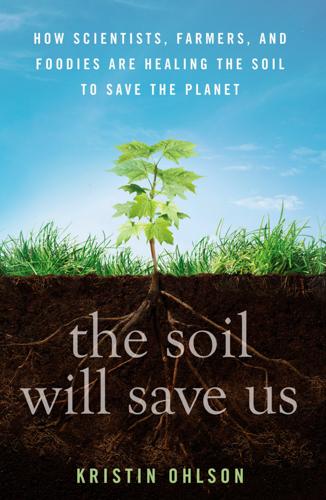
The Soil Will Save Us
by
Kristin Ohlson
Published 14 Oct 2014
“I can not only give someone information on the way their soil is right now, but I can tell them what they can expect it to become given a certain kind of management,” Rooney told me. “That’s important, because it’s all about the site’s capacity to give us more.” Rooney’s technology is mostly used with high-value crops like grapes as well as in what’s called precision agriculture: large-scale operations that try to minimize the amount of irrigation and fertilizer a crop might need based on a detailed understanding of what’s happening in the soil. He’s used his technology in China, North Africa, Europe, and the United States, helping industrial agriculture be more efficient and less wasteful.

Enlightenment Now: The Case for Reason, Science, Humanism, and Progress
by
Steven Pinker
Published 13 Feb 2018
Islam and patriarchy: How robust is Muslim support for patriarchal values? International Review of Sociology, 21, 249–75. Alexander, S. 2016. You are still crying wolf. Slate Star Codex, Nov. 18. http://slatestarcodex.com/2016/11/16/youarestillcryingwolf/. Alferov, Z. I., Altman, S., & 108 other Nobel Laureates. 2016. Laureates’ letter supporting precision agriculture (GMOs). http://supportprecisionagriculture.org/nobel-laureate-gmo-letter_rjr.html. Allen, P. G. 2011. The singularity isn’t near. Technology Review, Oct. 12. Allen, W. 1987. Hannah and her sisters. New York: Random House. Alrich, M. 2001. History of workplace safety in the United States, 1880–1970.
…
At various times, farmers have pivoted to slash-and-burn horticulture, night soil (a euphemism for human feces), crop rotation, guano, saltpeter, ground-up bison bones, chemical fertilizer, hybrid crops, pesticides, and the Green Revolution.20 Future pivots may include genetically modified organisms, hydroponics, aeroponics, urban vertical farms, robotic harvesting, meat cultured in vitro, artificial intelligence algorithms fed by GPS and biosensors, the recovery of energy and fertilizer from sewage, aquaculture with fish that eat tofu instead of other fish, and who knows what else—as long as people are allowed to indulge their ingenuity.21 Though water is one resource that people will never pivot away from, farmers could save massive amounts if they switched to Israeli-style precision farming. And if the world develops abundant carbon-free energy sources (a topic we will explore later), it could get what it needs by desalinating seawater.22 * * * Not only have the disasters prophesied by 1970s greenism failed to take place, but improvements that it deemed impossible have taken place.

Frugal Innovation: How to Do Better With Less
by
Jaideep Prabhu Navi Radjou
Published 15 Feb 2015
Changing a business model also requires investment, which must come with an attractive return. This analogy can help frugal producers convince customers to change their personal business model by showing them the relevant return on investment. For example, gThrive, a Silicon Valley start-up, offers precision agriculture services to farmers in drought-prone California. It sells gStakes, maintenance-free wireless sensors designed like a lightweight plastic ruler, which, when inserted in various parts of a field, frequently measure and track soil and environmental conditions (moisture, air temperature, sunlight).
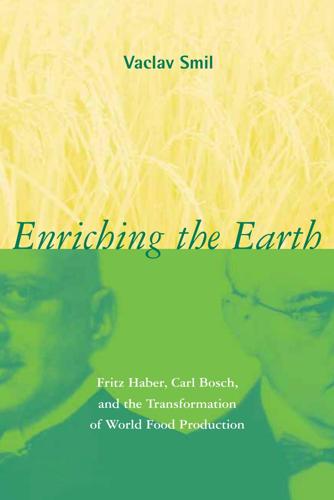
Enriching the Earth: Fritz Haber, Carl Bosch, and the Transformation of World Food Production
by
Vaclav Smil
Published 18 Dec 2000
A counterintuitive result regarding fertilizer placement emerged from a study in Missouri that demonstrated that with adequate water supply applications of nitrogen, and water, in alternate furrows produced a harvest at least equivalent or even higher than those resulting from fertilizing every furrow.17 Cheaper microcomputers and the commercial availability of global positioning systems (GPS) opened up the possibility of site-specific applications of fertilizers. Rather than choosing the fertilizer amount according to average conditions within a field, precision farming adjusts the applied amount according not only to field-tofield variations in soil quality but also to often substantial differences of nutrient content within a single field.18 Maximized yields and profits and minimized nitrogen applications, and hence reduced nutrient losses to the environment, should be the ideal outcome. Evaluations of recent experiments with precision farming have ranged from highly encouraging results to no significant difference when compared with standard practices to unprofitable experiences, but there is little doubt that the technique will be pursued and perfected in the future.19 A totally different approach to increasing the efficiency of fertilizing is to slow down the rate of nitrification, and hence to reduce the water-borne losses of the nutrient.
…
Rome: FAO; FAO. 1983. Maximizing Fertilizer Use Efficiency. Rome: FAO; Hargrove, W. L., ed. 1988. Cropping Strategies for Efficient Use of Water and Nitrogen. Madison, Wis.: American Society of Agronomy; Munson, R. D., and C. F. Runge. 1990. Improving Fertilizer and Chemical Efficiency Through ‘‘High Precision Farming.’’ Center for International Food and Agricultural Policy, St. Paul, Minn.: University of Minnesota; Fragoso, M. A., ed. 1993. Optimization of Plant Nutrition. Amsterdam: Kluwer; Dudal, R. and R. N. Roy, eds. 1995. Integrated Plant Nutrition Systems. Rome: FAO; Prasad, R., and J. F. Power. 1997.
…
Concepts of variable rate technology with considerations for fertilizer application. Journal of Production Agriculture 7:195–201; Franzen, D. W., and T. R. Peck. 1995. Field soil sampling density for variable rate fertilization. Journal of Production Agriculture 8:568–674; Lu, Y., et al. 1997. The current state of precision farming. Food Reviews International 13(2):141–162; Wollring, J., et al. 1998. Variable Nitrogen Application Based on Crop Sensing. York: International Fertiliser Society. Notes to Chapter 10 319 19. Wibawa, W. D., et al. 1993. Variable fertilizer application based on yield goal, soil fertility, and soil map unit.
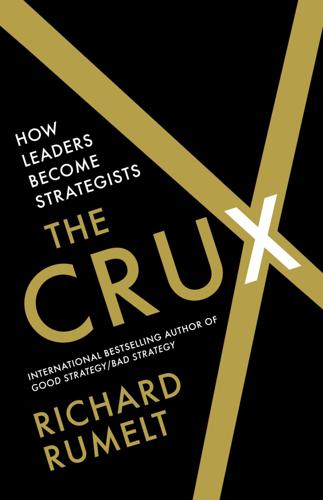
The Crux
by
Richard Rumelt
Published 27 Apr 2022
There should be some sort of scale economies as we grow, but it seems that increased complexity overwhelms that. Precision Farming: For many years, big farming went in the direction of larger, ever-more-specialized machines. Instead of pulling a tiller with a tractor, companies developed giant specialized tilling machines. Our methods, by contrast, were developed in small-scale growing and expanded to deal with larger farms. Much of what we do is program pivot machines.1 However, recently, really since 2003 or so, there has been a trend toward what is called “precision farming.” This is the opposite of the “big-machine” trend. Instead, precision farming aims to use robotics and AI to make fleets of lightweight machines and aerial drones that can give individual attention to plants.
…
But, today, FarmKor’s style of agrotech was no longer a new thing. The application of sensors and software to agriculture had become fairly common, with many vendors offering roughly similar solutions. Still, there was no lack of opportunity, as evidenced by the development programs in robotics and precision farming by the majors and the clutch of new firms entering with vertical farming, hydroponics, rooftop farming, and fully controlled farming solutions. I began the session with a brief review of what we had accomplished yesterday and summarized the ten challenges. I then showed eight PowerPoint slides of quotes from my interviews.

Rise of the Robots: Technology and the Threat of a Jobless Future
by
Martin Ford
Published 4 May 2015
* Economists categorize fast food as part of the service sector; however, from a technical standpoint it is really closer to being a form of just-in-time manufacturing. * Google’s strong interest in robotics was further demonstrated in 2013, when the company purchased eight robotics start-up companies over a six-month period. Among the companies acquired was Industrial Perception. * Precision agriculture—or the ability to keep track of and manage individual plants or even fruits—is part of the “big data” phenomenon, a subject that we’ll examine in more depth in Chapter 4. Chapter 2 IS THIS TIME DIFFERENT? On the morning of Sunday, March 31, 1968, the Reverend Martin Luther King, Jr., stood in the elaborately carved limestone pulpit at Washington National Cathedral.

Chokepoint Capitalism
by
Rebecca Giblin
and
Cory Doctorow
Published 26 Sep 2022
Just a handful of firms—or sometimes only one—now control everything from the arts (publishing, movies, music, streaming, comics, bookselling, movie theaters, talent agencies, games, wrestling, radio stations) to finance (banks, investment funds, auditors, bondrating agencies) to agribusiness (seeds, livestock, tractors, fertilizer, pesticides, precision agriculture, and the production of meat, eggs, grain, and produce) and everything in between (cruise lines, cheerleader uniforms, groceries, pharmaceuticals, glass bottles, medical devices, airlines, eyeglasses, athletic shoes, fast food, food delivery, and pet food). Some of this increased concentration is courtesy of a tsunami of mergers: the number of US publicly traded companies dropped by half even as they increased by 50 percent in other developed nations.7 Companies always pinkie swear their mergers will result in lower prices, but analyses done after the fact show again and again that prices actually go up—especially when the merger is in an already concentrated market.8 Regulators keep accepting those promises, and their credulity sometimes appears to work in their favor: one FCC Commissioner joined Comcast as “senior vice president for government affairs” just four months after voting in favor of its mega-merger with NBC Universal.9 If the consumer welfare standard really were working out for us, wealth equality would be improving.
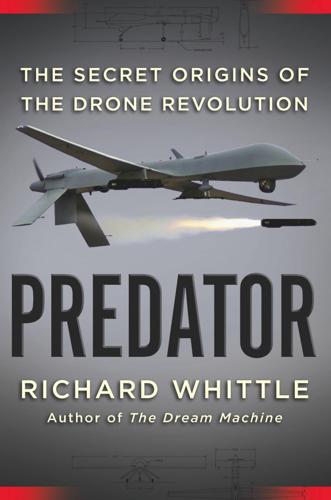
Predator: The Secret Origins of the Drone Revolution
by
Richard Whittle
Published 15 Sep 2014
And just as it transformed the military and the CIA, the drone revolution also promises to reshape society, from the way our laws are enforced and how much privacy we enjoy, to the way our food is grown, our news is gathered, and our goods and services are bought, sold, and delivered. Law enforcement, wildfire management, precision agriculture, news and entertainment media, search and rescue, environmental research, disaster response—the list of potential uses for drones providing a bird’s-eye view of the world is nearly inexhaustible, the possibilities as boundless as the human imagination. For the moment, Federal Aviation Administration regulations limit the use of unmanned aircraft to hobbyists and government and academic entities granted a special certificate of authorization by the FAA.

The Science and Technology of Growing Young: An Insider's Guide to the Breakthroughs That Will Dramatically Extend Our Lifespan . . . And What You Can Do Right Now
by
Sergey Young
Published 23 Aug 2021
He could not have imagined that automated farm equipment, refrigerated trucks, and nitrogen fertilizer would revolutionize humanity’s ability to feed itself. While the problems of wealth disparity and food waste must be resolved before the benefits of these leaps in agricultural output can be enjoyed by all, in just the last forty years, global agricultural output increased by 60 percent, using just 5 percent more land.10 Now, precision farming is employing sensors, hyper-accurate geopositioning, and drones to increase crop yields while reducing usage of water and toxic chemicals. Genetic modification allows disease and drought-resistant vegetables with longer shelf lives. Lab-grown, cell-based meat is on its way to replacing animal slaughter in as soon as a decade.

The Age of Surveillance Capitalism
by
Shoshana Zuboff
Published 15 Jan 2019
Our hope is that this model provides examples of how collective decision-making may work in other aspects of the global community.”21 Later that year, Zuckerberg told an audience of developers that “we have a full roadmap of products to help build groups and community, help build a more informed society, help keep our communities safe, and we have a lot more to do here.”22 Back on that stage in the spring of 2017, Microsoft’s Nadella encouraged his developers: “Whether it’s precision medicine or precision agriculture, whether it’s digital media or the industrial internet, the opportunity for us as developers to have broad, deep impact on all parts of society and all parts of the economy has never been greater.”23 The vision that Nadella unveiled that day is emblematic of the wider surveillance capitalist template for our futures.
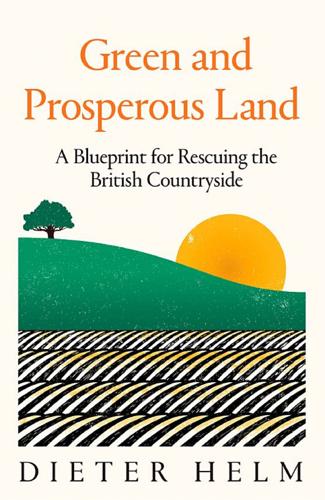
Green and Prosperous Land: A Blueprint for Rescuing the British Countryside
by
Dieter Helm
Published 7 Mar 2019
The result will be a more silent and browner environment. The countryside becomes more and more industrialised. To these incremental technological advances, two new and transformational ones are being added, together already further changing the face of agriculture. These are digitalisation and genetics. Digitalisation enables both precision farming based on big data, and a further switch away from labour to robotics, 3D printing and AI. Genetics means that centuries of careful plant and animal breeding can be leapfrogged in a test tube. The very building blocks of species can be manipulated and changed, and all at a fast pace. These two changes are probably each more profound than the switch from horse power to tractors.

Range: Why Generalists Triumph in a Specialized World
by
David Epstein
Published 1 Mar 2019
It was the first direct test to support Einstein’s idea that Earth drags the fabric of space-time around with it as it spins. The technology left a greater legacy. Components designed for Gravity Probe B improved digital cameras and satellites; the centimeter-accurate GPS was applied to automatic aircraft landing systems and precision farming. The following year, a new NASA administrator was appointed by the president. The new administrator demanded the kind of individualism and opinionated debate that could serve as a cross-pressure for NASA’s robust process accountability. He made Geveden the associate administrator, essentially the COO of NASA, and the highest position in the agency that is not politically appointed
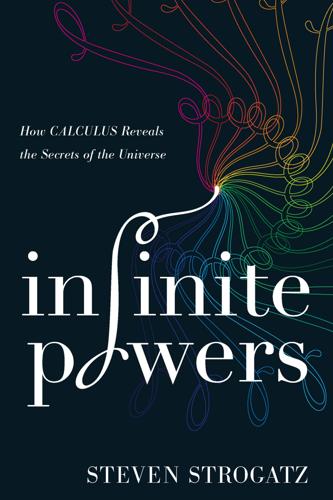
Infinite Powers: How Calculus Reveals the Secrets of the Universe
by
Steven Strogatz
Published 31 Mar 2019
The original intent was to keep track of US submarines carrying nuclear missiles and give them precise estimates of their current locations so that if they needed to launch a nuclear strike, they could target their intercontinental ballistic missiles very accurately. Peacetime applications of GPS nowadays include precision farming, blind landings of airplanes in heavy fog, and enhanced 911 systems that automatically calculate the fastest routes for ambulances and fire trucks. But GPS is more than a location and guidance system. It allows time synchronization to within a hundred nanoseconds, which is useful for coordinating bank transfers and other financial transactions.
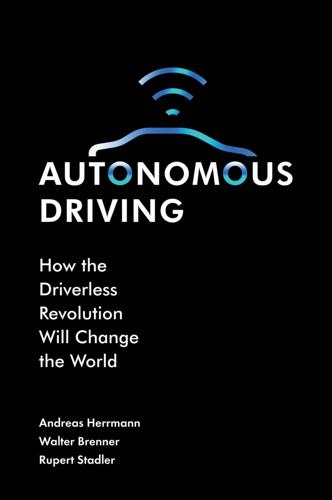
Autonomous Driving: How the Driverless Revolution Will Change the World
by
Andreas Herrmann
,
Walter Brenner
and
Rupert Stadler
Published 25 Mar 2018
Statement by Markwart von Pentz Markwart von Pentz, President Agriculture and Turf, Europe, Asia, Africa, John Deere & Company Agricultural productivity can be significantly increased with autonomous vehicles (tractors, combine harvesters etc.). The development of self-driving tractors, combine harvesters and other vehicles is embedded in the precision farming system at John Deere. The objective is to improve agricultural productivity with the application of information technology. Autonomous vehicles can be controlled so exactly that lane overlaps are a maximum of 1 centimetre at a speed of up to 40 kilometres per hour (25 miles per hour). This leads to significant fuel savings’ reductions in the amount of seed and fertilizer used, which increases productivity by 10 per cent. 90 per cent of large machines are already equipped with this technology, and due to falling prices, it is worthwhile using self-driving vehicles in smaller and smaller fields.
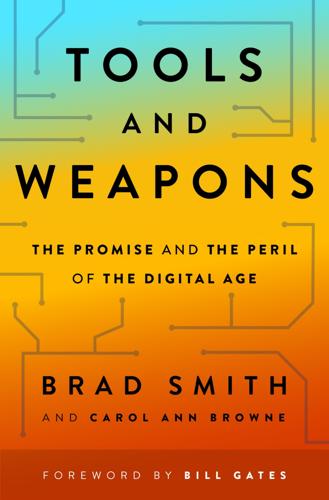
Tools and Weapons: The Promise and the Peril of the Digital Age
by
Brad Smith
and
Carol Ann Browne
Published 9 Sep 2019
Their research suggests that the Pew numbers are much closer to the mark than the estimate from the FCC.9 But even more than that, this leaves us with the inescapable conclusion that today there exists no fully accurate estimate of broadband availability in the United States, anywhere. Does this matter? You bet, and in a big way. Broadband has become the electricity of the twenty-first century. It’s fundamental to the way people work, live, and learn. The future of medicine is telemedicine. The future of education is online education. And the future of agriculture is precision farming. Even with a future where there is more computing intelligence “at the edge”—meaning with ubiquitous small and powerful devices that process more data themselves—there still needs to be some high-speed access to the cloud. And that requires broadband. Today, rural areas that lack broadband are still living in the twentieth century.

Grand Transitions: How the Modern World Was Made
by
Vaclav Smil
Published 2 Mar 2021
Improving this situation will not be easy: as already explained, global population is now existentially dependent on nitrogen fertilizers: they now secure the prevailing diets for about 45% of the world’s population, or more than three billion people—while in China and India the shares are more than 60% (Ma et al. 2010; Pathak et al. 2010). There are only two effective options to lower nitrogen applications. Better agronomic management would cut nitrogen’s field losses but it requires combined, well-executed, and costly steps by relying on split fertilizer applications, balanced use of nutrients, precision farming, rotations with leguminous crops, and the use of expensive slow-release fertilizer compounds. A second option is that affluent countries could achieve greater and faster savings by cutting down on their average meat consumption. Given the combination of the prevailing low rates of nitrogen recovery by crops, of their large share used for animal feeding, and of low feed-to-meat conversion efficiencies, the overall nitrogen efficiency of the global food system is no more than 15% (Smil 2013b), with the US rate at only about 12% (Howarth et al. 2002) and the Chinese rate at just 9% (Ma et al. 2010).

Energy and Civilization: A History
by
Vaclav Smil
Published 11 May 2017
They are used directly to power machines and indirectly to build them, to extract mineral fertilizers, to synthesize nitrogenous compounds and a still expanding variety of protective agrochemicals (pesticides, fungicides, herbicides), to develop new crop varieties, and most recently to energize the electronics used in many functions that now support precision farming. Fossil fuels and electricity have brought higher and more reliable yields. They have displaced virtually all draft animals in all rich countries and greatly reduced their importance in the poor ones, and the replacement of muscles by internal combustion engines and electric motors sustained the reduction of labor started by preindustrial farming advances.

Accessory to War: The Unspoken Alliance Between Astrophysics and the Military
by
Neil Degrasse Tyson
and
Avis Lang
Published 10 Sep 2018
For now, though, the world relies on satellite-dependent global positioning systems, which have already transformed how billions of people and things navigate their appointed or chosen paths. For better or worse, GPS and its relatives have made countless inventions possible, from America’s Predator and Reaper warrior drones to Dubai’s single-passenger driverless air taxis to the management of crops via precision farming. So, unless you hope to re-create the conjectural voyage of Polynesians to Peru a thousand years ago, you need never again consult a map or compass, let alone an astrolabe or kamal. Whether you’re in Moscow or Manhattan, rural Rajasthan or central Shanghai, global positioning will direct you to your destination—assuming you don’t mind having your whereabouts tracked by eyes in the sky.